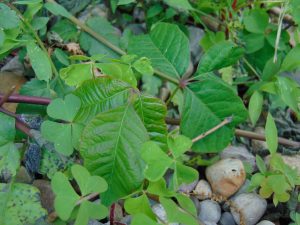Happy New Year!
I hope that 2017 was a year of success and I hope that 2018 will be even better. Of course, a year is what you make it. Although you cannot control what the year will bring, you can control how you react to what it gives you. Good or bad. I hope that one of your resolutions for 2018 will be to look on the bright side. See the glass half full. Be optimistic. If you chose to make 2018 a great year, it will be.
Yesterday I received a piece of mail titled to “Mr. Noble Osu Extension”. Yes, you read that correct. It was from the Arbor Day Foundation and it promised free gifts inside. Naturally, I wanted to at least see these “free gifts” and find out what they were hoping to get in return. Inside was a survey, return address labels, a calendar, and a list of enticing reasons why I should join the foundation and complete their survey.
One of these was the chance to win a “year’s supply of coffee”, which for me was more like twelve weeks’ worth of coffee, but hey, they got me. I completed the survey, hung up the calendar, and slipped the return labels into my desk. I am saving them for a gag where it would be appropriate to call myself “Mr. Noble Osu Extension.” My response will be counted to promote forest conservation. That alone would have been enough for me.
There are two surveys that I urge you to complete this January. One is the 2017 Census of Agriculture. The other is the 2017 Noble County OSU Extension ANR Program Survey. No, they don’t come with “free gifts”, but they should at least have your name and correct when you receive them. I can already see you rolling your eyes as you read this and thinking “Ugh, surveys!” So let me interject with a familiar story:
Luke 2:1-7: “1In those days Caesar Augustus sent out word that the name of every person in the Roman nation must be written in the books of the nation. 2This first writing took place while Quirinius was ruler of Syria. 3So all the people went to their own cities to have their names written in the books of the nation. 4Joseph went up from the town of Nazareth in the country of Galilee to the town of Bethlehem. It was known as the city of David. He went there because he was from the family of David. 5Joseph went to have his and Mary’s names written in the books of the nation. Mary was his promised wife and soon to become a mother. 6While they were there in Bethlehem, the time came for Mary to give birth to her baby. 7Her first son was born. She put cloth around Him and laid Him in a place where cattle are fed. There was no room for them in the place where people stay for the night.”
In the Christmas story we read that Jesus’s parents rode 65 miles from Nazareth to Bethlehem, while Mary was nine months pregnant, riding on a donkey, to be counted in a census, so that the government could assess their tax rate! Then when they arrived, Mary was in labor, and there was nowhere to stay except a stable. Can you imagine your first-born child being born in a barn, 65 miles from home, because the government ordered you to go? Does a paper or online census sound as bad now?
The 2017 Census of Agriculture is your chance to be counted. It is conducted once every five years. The information collected from the census is the only uniform, comprehensive, and impartial source of data that reaches every state and county in the U.S.A. It is used so that you will be represented appropriately by the United States Department of Agriculture in conversations with trade associations, researchers, policy makers, extension educators, agribusiness, and more. Every single voice matters. The census survey is lengthy, but keep in mind that every farmer in the U.S. has to complete the same survey. Some sections may not apply to you, but I guarantee that at least one will. You should have received a census form in the mail in December. You can chose to complete the paper forms or you can complete the census survey online at www.agcensus.usda.gov. If you did not receive a census packet, you can complete the survey online, or request one by calling (800)-727-9540. The deadline to respond is February 5, 2018.
Noble County OSU Extension looks forward to providing programming for you in 2018. Thank you to those who have completed the survey already. If you have not, please help us develop helpful program content by completing the 2017 ANR Program Survey online at: http://go.osu.edu/nobleanrsurvey17.
If you want to be represented in your community and nation, take these opportunities to be counted.
Have a wonderful New Year readers!


















